

You are using an out of date browser. It may not display this or other websites correctly.
You should upgrade or use an alternative browser.
You should upgrade or use an alternative browser.
MO-APE
Member
jmm46 said:Just curious, I broadcasted urea with a hand/bag spreader just b4 our big rain last night and while I was spreading it, my hands and arms got a slimy/sweaty coating all over it, it was hot out so this added to the stickiness. Just wondering if nitrogen is bad for my skin??
You will probably turn into the Incredible Hulk.
dbltree
Super Moderator
September 11, 2012
Our brassicas struggled to even germinate during the extreme drought of 2012 but those brassicas that followed winter rye not only germinated but eventually, with some rainfall leaped to life!
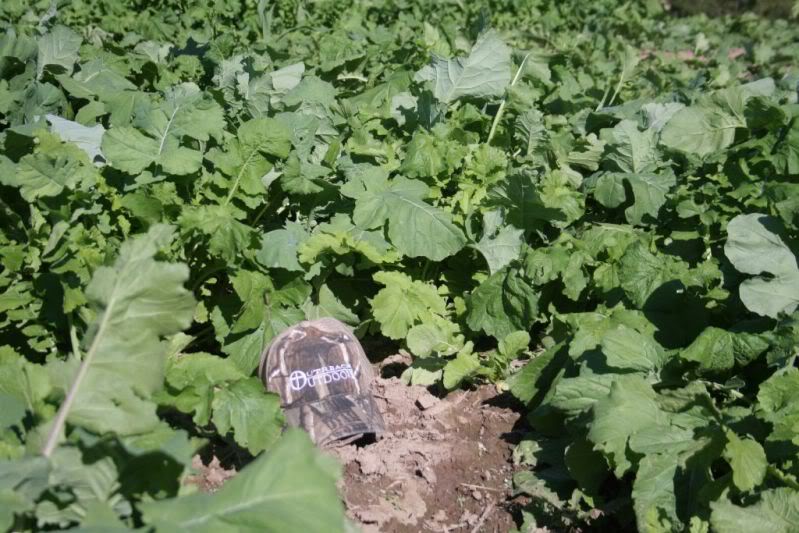
We use 400#'s of 6-28-28 and 100-200#'s of urea per acre on our brassicas and with a reasonable about of rainfall they will grow rapidly in 60-90 days and the dark green color shows they are getting plenty of both nutrients and water.
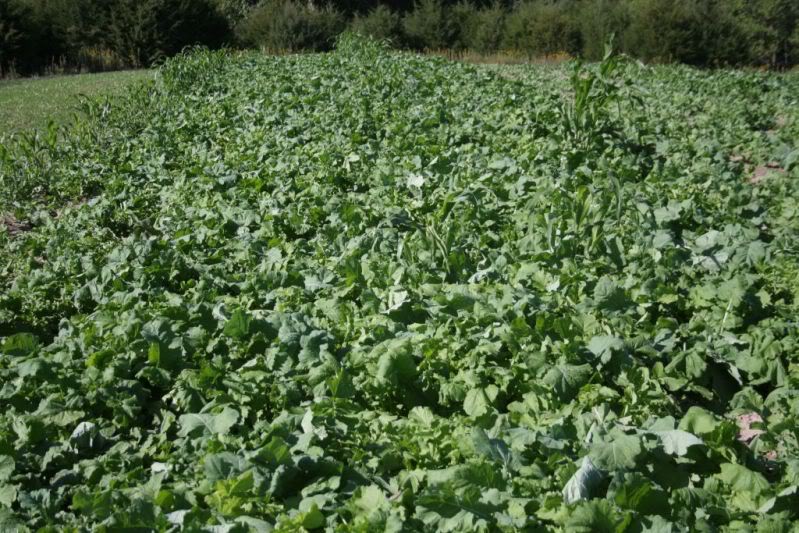
For those new to brassicas...note the leaf color and shape difference
Dwarf Essex Rape
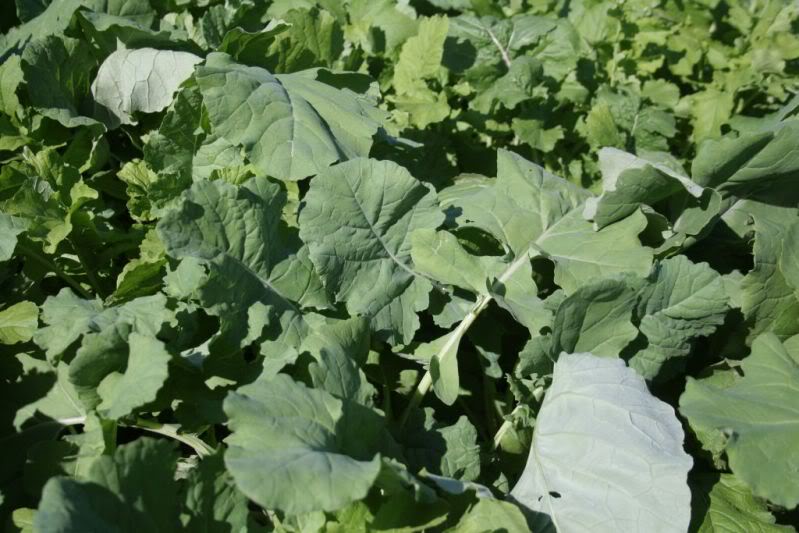
Purple Top Turnips
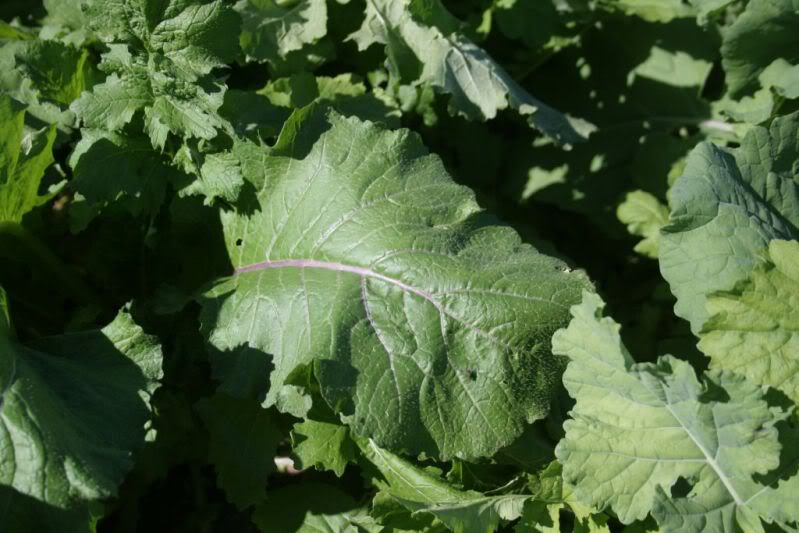
Groundhog Forage Radish
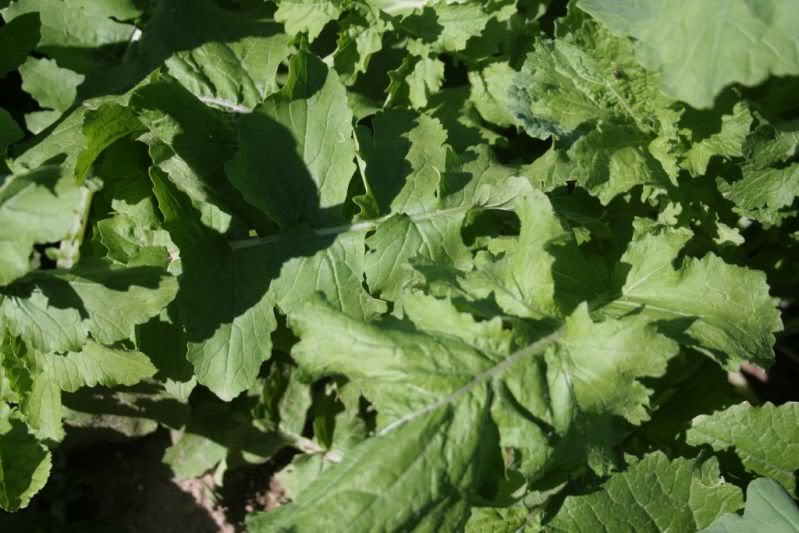
Brassicas provide a tremendous amount of forage and late winter feed in the form of roots from both turnips and radish
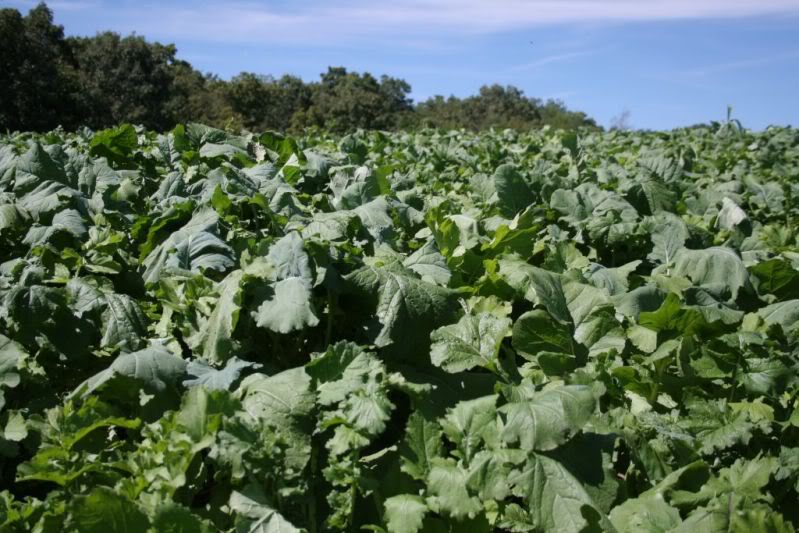
I mentioned the amazing difference in brassicas that were planted into tilled under winter rye....this pics still astound me!
Brassicas in rye on left, in oats on right....
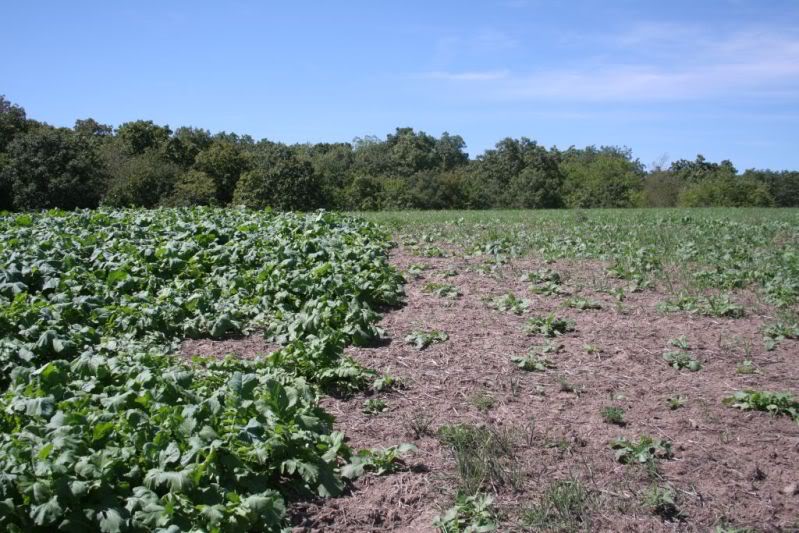
Growth in the rye is incredible
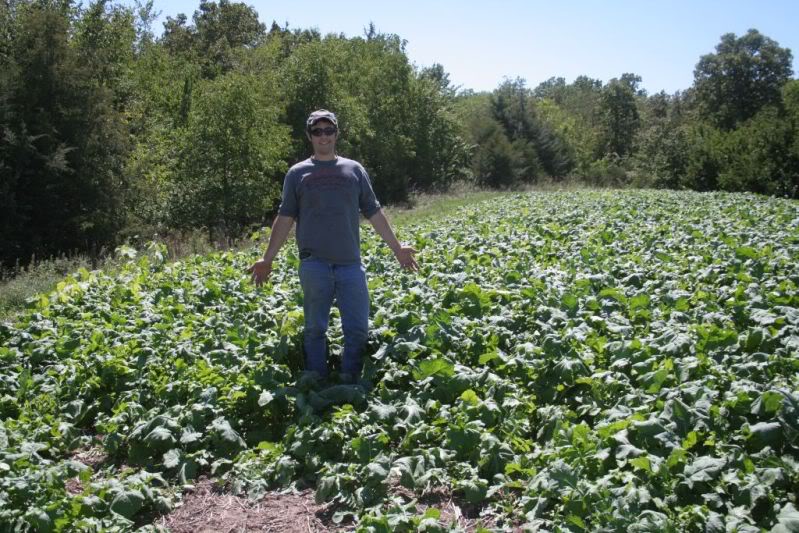
other side of the same field, same thing...brassicas back right followed cereal rye....front part followed oats
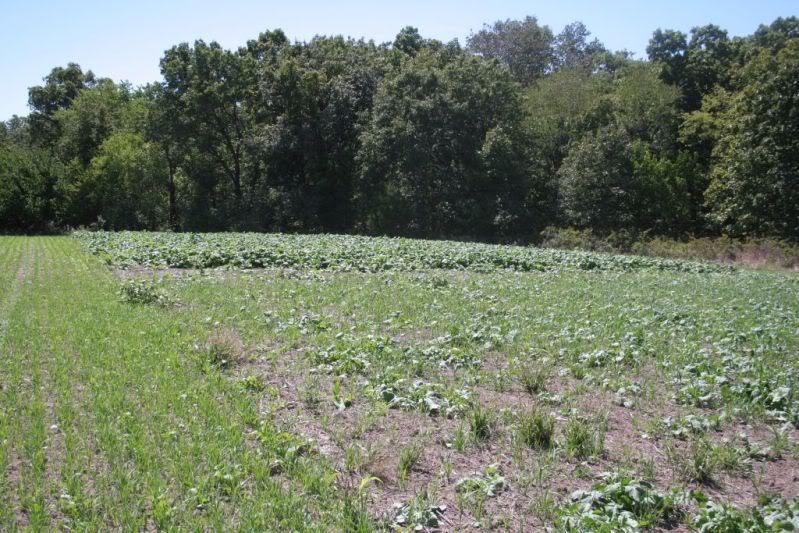
While this thread may be about brassicas....they are useless if they don't grow and droughts are an imminent part of our weather cycles, the next one may be next year! Consider a crop rotations such as I use to build organic matter and increase water retention to insure success avoid crop failures and adapt your deer to coming to your plots 365 days a year with year around food sources, all in each feeding area....
Our brassicas struggled to even germinate during the extreme drought of 2012 but those brassicas that followed winter rye not only germinated but eventually, with some rainfall leaped to life!

We use 400#'s of 6-28-28 and 100-200#'s of urea per acre on our brassicas and with a reasonable about of rainfall they will grow rapidly in 60-90 days and the dark green color shows they are getting plenty of both nutrients and water.

For those new to brassicas...note the leaf color and shape difference
Dwarf Essex Rape

Purple Top Turnips

Groundhog Forage Radish

Brassicas provide a tremendous amount of forage and late winter feed in the form of roots from both turnips and radish

I mentioned the amazing difference in brassicas that were planted into tilled under winter rye....this pics still astound me!
Brassicas in rye on left, in oats on right....

Growth in the rye is incredible

other side of the same field, same thing...brassicas back right followed cereal rye....front part followed oats

While this thread may be about brassicas....they are useless if they don't grow and droughts are an imminent part of our weather cycles, the next one may be next year! Consider a crop rotations such as I use to build organic matter and increase water retention to insure success avoid crop failures and adapt your deer to coming to your plots 365 days a year with year around food sources, all in each feeding area....
Plant ALL in one plot in strips or blocks
Alice, Kopu II, Durana (or comparable) white clover 10% of plot, sow at 6#'s per acre with the rye combination in the fall or in the spring with oats and berseem clover. Correct Ph and P&K with soil tests
Brassicas in 45% of plot
Purple Top Turnips 3#
Dwarf Essex Rape 2#
GroundHog Forage radish 5#
Plant in mid to late July in most Midwest states, or 60-90 days before your first killing frost, Use 200#'s of 46-0-0 urea and 400#'s of 6-28-28 per acre. Follow the dead brassicas with oats and berseem or crimson clover in mid spring at 60#'s oats and 12-15#'s berseem clover and/or 50#'s of chickling vetch)
Cereal Grain combo in 45% of plot
Winter rye 50-80#'s per acre (56#'s = a bushel)
Spring oats 80-120#'s per acre (32#'s = a bushel)
Frostmaster Winter Peas or 4010/6040 Forage peas 20-80#'s per acre
Red Clover 8-12#'s per acre or white clover at 6#'s per acre (or 20-40 pounds hairy vetch and 20-30#'s crimson clover on sandy soils)
Groundhog Forage Radish 5#'s per acre
Plant in late August to early September, if following well fertilized brassicas use 100 - 200#'s of urea, if starting a new plot add 400#'s of 6-28-28
Rotate the brassicas and rye combo each year
Last edited:
I'm very pleased so far with the deer use of my brassica plot. First time planted and followed oats. Not as thick as yours that followed rye but better than yours that followed oats. The does are in it thick every night with a mouth full of salad. Thanks for all the advise.
Things have gone from bad to worse with my brassicas plot. After no precipitations in about 6-7 wks they were showing little signs of growth at about 5-6" tall. For the MN archery opener this weekend I was shocked when I showed up Friday morning to check some cameras and found the neighbors heffers had got out and wiped out virtually all of the tops (about 3 acres worth). It's amazing what 40 head can do in a matter of a few hrs. There are still roots present and some scattered tops still appear. We finally received some much needed rain last night and hopefully that will get the rye combination up which is also another 3 acres. Deer were still out scratching around in the Brassicas Sat evening. Will there any significant regrowth assuming we get some precipitation? I broadcast some left over radish into some of the bare spots prior to the rain but, wonder if I should just seed it in rye or let it go.
dbltree
Super Moderator
wonder if I should just seed it in rye or let it go.
That is the best bet at this point, brassicas can not put on any significant growth from this point on especially in your area but rye can and will! :way:
dbltree
Super Moderator
September 18th, 2012
As we fall progresses I will continue to share the difference between brassica planted in mid July (the proper planting time for my area) versus brassicas planted in late August. Brassicas need 60-90 days growing time before the average first frost date in your area so those in the north may plant earlier and those south, later but for SE Iowa...mid July is perfect to get maximum growth before fall.
These are late August brassicas from a little seed left in the drill...not going to amount to much....
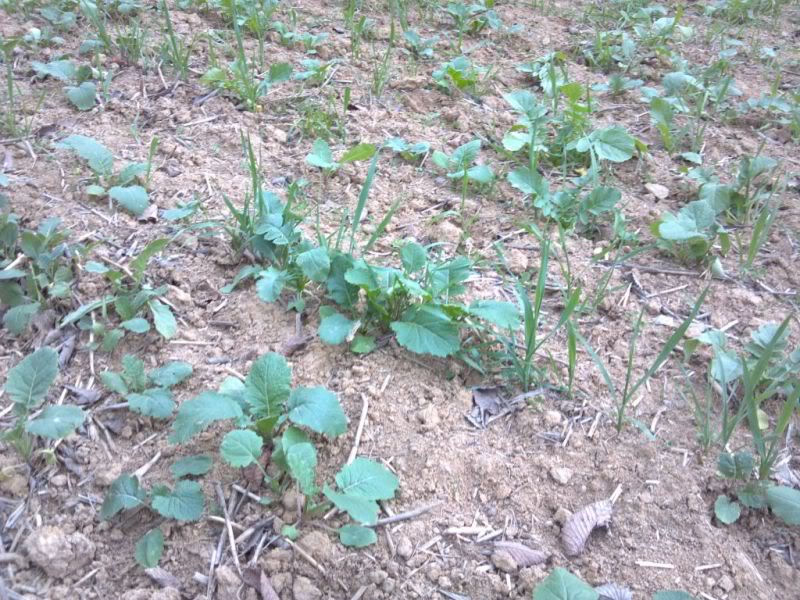
these were planted July 18th and endured extreme drought yet will produce outstanding forage and root yields
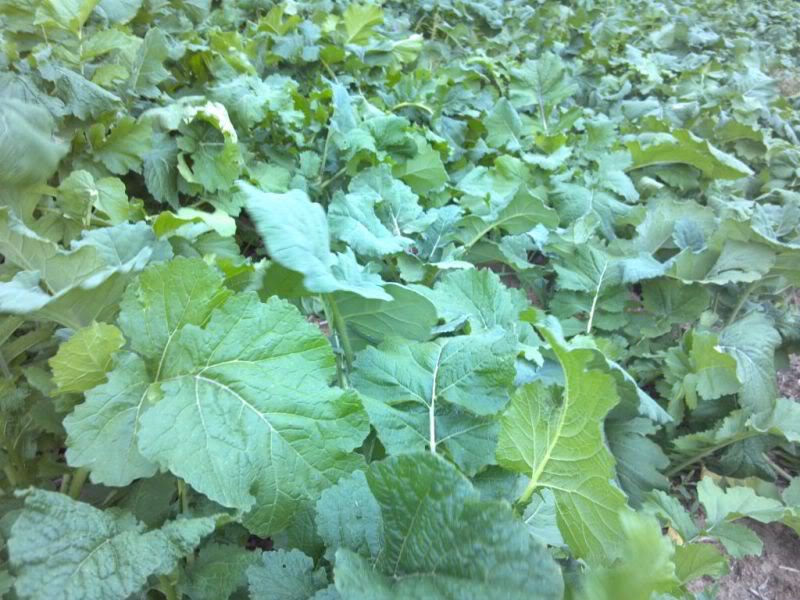
While weather and "life" may cause planting delays, it makes no sense to purposely short change yourself on yields. More food produced in a smaller area allows you to have more cover...more cover + more deer....simple as that.
The early planted brassicas insure that the forage radish will be at the right height at which whitetails find them extremely attractive and they will begin to feast on them at a rapid rate!
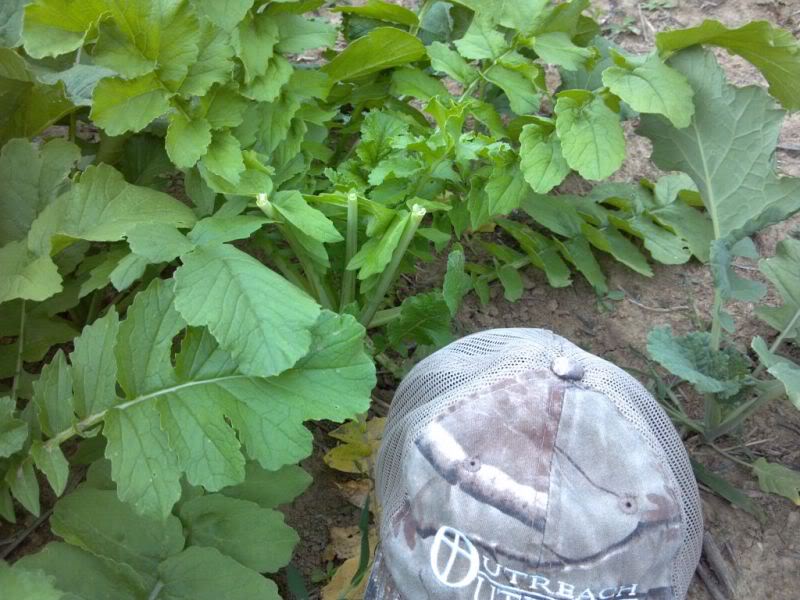
The radishes added to the rye mix will reach the palatable stage in mid October (unlike rape and radish they reach that stage far faster so can be planted later with rye) the combination of these crops will keep deer feeding here literally year around.
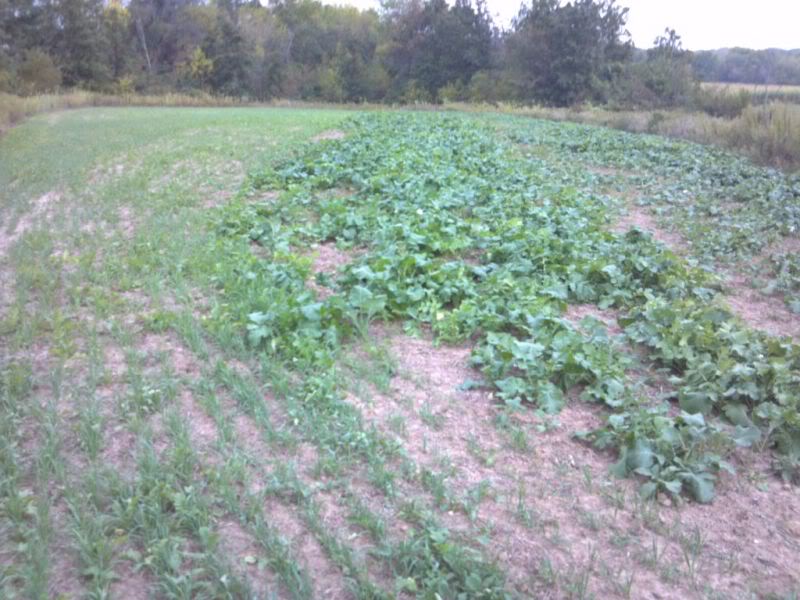
The clovers added to the rye will keep deer coming all next summer while fixing nitrogen that can be utilized by next summers brassica crop when I flip flop the two crops in each feeding area. Great combination for habitat and soil building at the same time....
As we fall progresses I will continue to share the difference between brassica planted in mid July (the proper planting time for my area) versus brassicas planted in late August. Brassicas need 60-90 days growing time before the average first frost date in your area so those in the north may plant earlier and those south, later but for SE Iowa...mid July is perfect to get maximum growth before fall.
These are late August brassicas from a little seed left in the drill...not going to amount to much....

these were planted July 18th and endured extreme drought yet will produce outstanding forage and root yields

While weather and "life" may cause planting delays, it makes no sense to purposely short change yourself on yields. More food produced in a smaller area allows you to have more cover...more cover + more deer....simple as that.
The early planted brassicas insure that the forage radish will be at the right height at which whitetails find them extremely attractive and they will begin to feast on them at a rapid rate!

The radishes added to the rye mix will reach the palatable stage in mid October (unlike rape and radish they reach that stage far faster so can be planted later with rye) the combination of these crops will keep deer feeding here literally year around.

The clovers added to the rye will keep deer coming all next summer while fixing nitrogen that can be utilized by next summers brassica crop when I flip flop the two crops in each feeding area. Great combination for habitat and soil building at the same time....
Plant ALL in one plot in strips or blocks
Alice, Kopu II, Durana (or comparable) white clover 10% of plot, sow at 6#'s per acre with the rye combination in the fall or in the spring with oats and berseem clover. Correct Ph and P&K with soil tests
Brassicas in 45% of plot
Purple Top Turnips 3#
Dwarf Essex Rape 2#
GroundHog Forage radish 5#
Plant in mid to late July in most Midwest states, or 60-90 days before your first killing frost, Use 200#'s of 46-0-0 urea and 400#'s of 6-28-28 per acre. Follow the dead brassicas with oats and berseem or crimson clover in mid spring at 60#'s oats and 12-15#'s berseem clover and/or 50#'s of chickling vetch)
Cereal Grain combo in 45% of plot
Winter rye 50-80#'s per acre (56#'s = a bushel)
Spring oats 80-120#'s per acre (32#'s = a bushel)
Frostmaster Winter Peas or 4010/6040 Forage peas 20-80#'s per acre
Red Clover 8-12#'s per acre or white clover at 6#'s per acre (or 20-40 pounds hairy vetch and 20-30#'s crimson clover on sandy soils)
Groundhog Forage Radish 5#'s per acre
Plant in late August to early September, if following well fertilized brassicas use 100 - 200#'s of urea, if starting a new plot add 400#'s of 6-28-28
Rotate the brassicas and rye combo each year
You may have addressed this in a prior post but couldn't find it. What would you reccomend to do for rotation in the spring if any if the whole plot is now rye?That is the best bet at this point, brassicas can not put on any significant growth from this point on especially in your area but rye can and will! :way:
dbltree
Super Moderator
You may have addressed this in a prior post but couldn't find it. What would you reccomend to do for rotation in the spring if any if the whole plot is now rye?
Get some red clover seed on now or frost seed it nect March
dbltree
Super Moderator
September 20th, 2012
The turnips have really started to grow once they got a little rain!
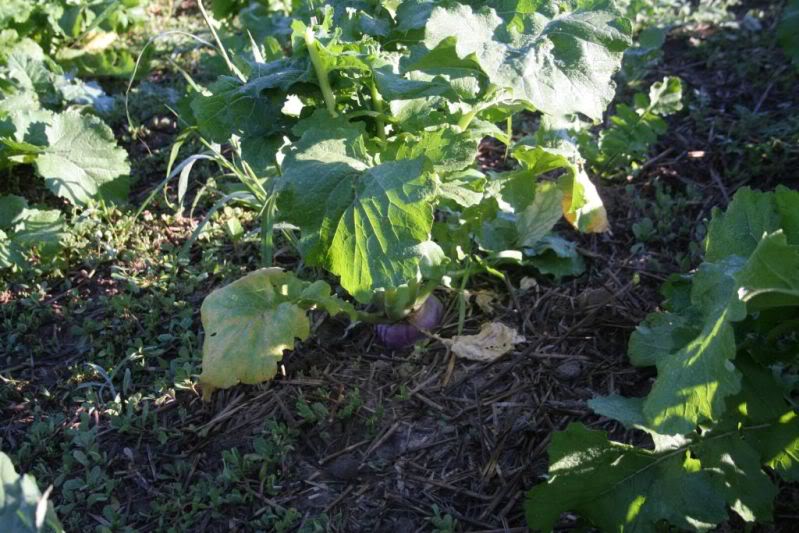
At this farm deer are even starting to eat the turnip tops already....scary!
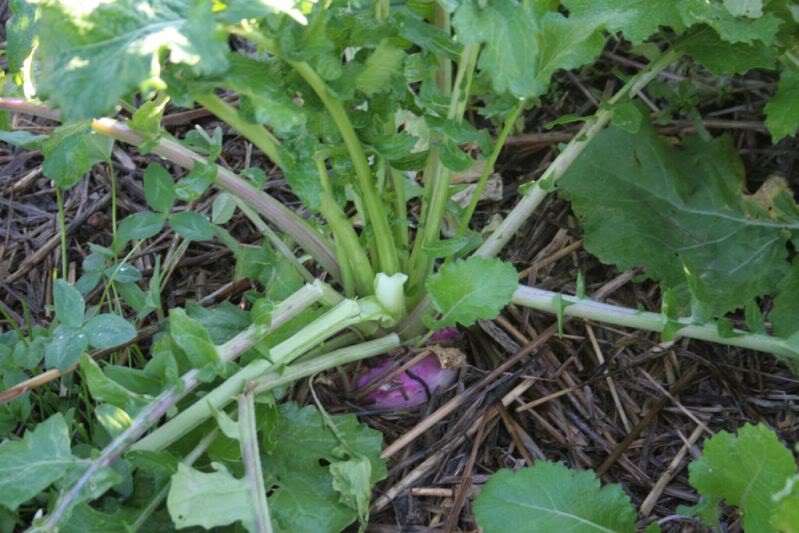
Mostly they concentrate on the forage radish tops....
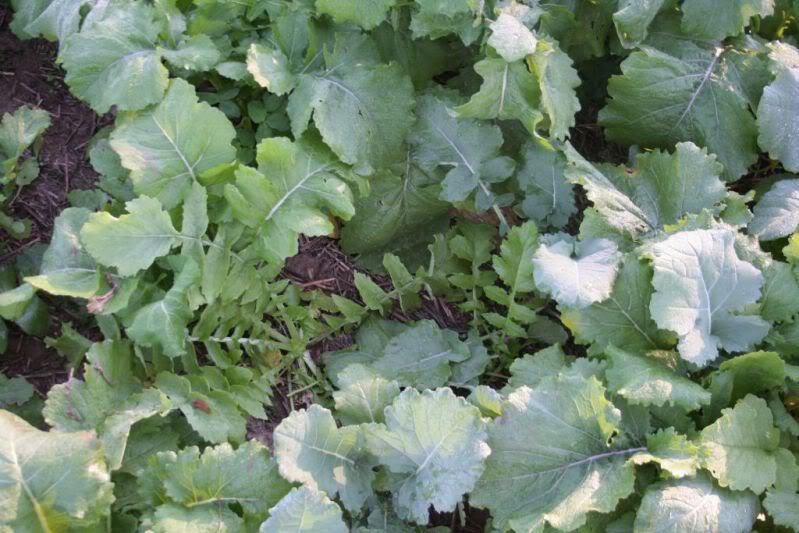
allowing the rape and turnip plants to grow and provide winter forage
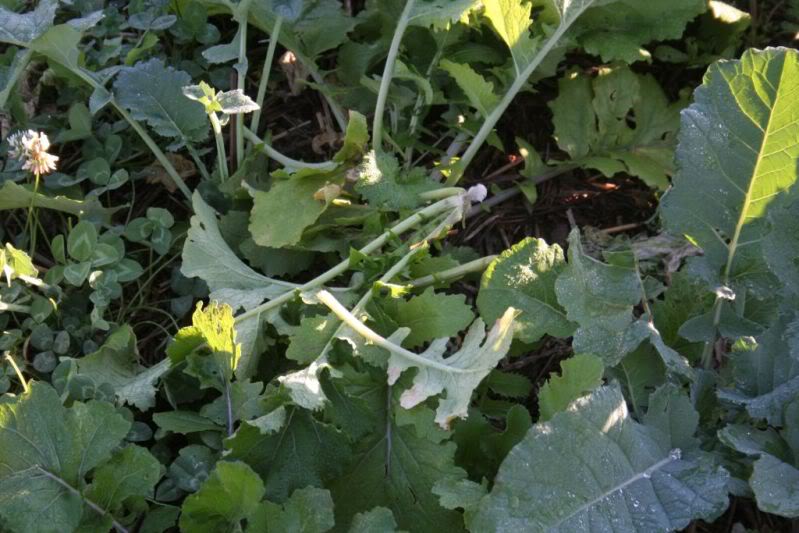
I have had brassicas wiped out many times but by having the cereal grain mix side by side, deer begin to focus on the lush rye and oats...further sparing the brassicas for now
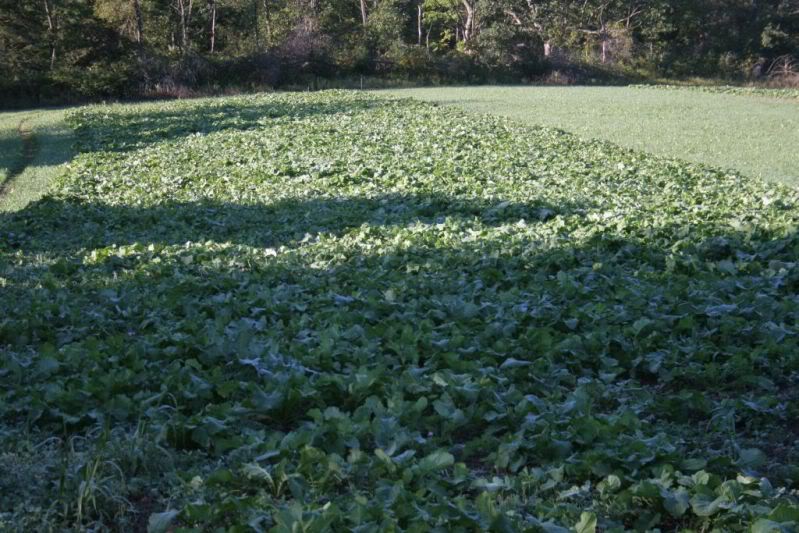
as with other crops such as soybeans and corn...the rate at which deer forage on ANY crop type will depend on the quality of adjacent cover and has NOTHING to do with crop type. No cover = no deer and plots go untouched while fantastic thick cover will in turn mean a high number of resident whitetails that will forage on ANY crop they can take advantage of.
Knowing this...if deer appear to not be feeding on any crop type of the entire feeding area...it is not the crop...it's the cover! Deer are opportunistic feeders and they do not have the luxury of turning up their noses at this food or that, unless they are knee deep in food...such as with the plots pictured....
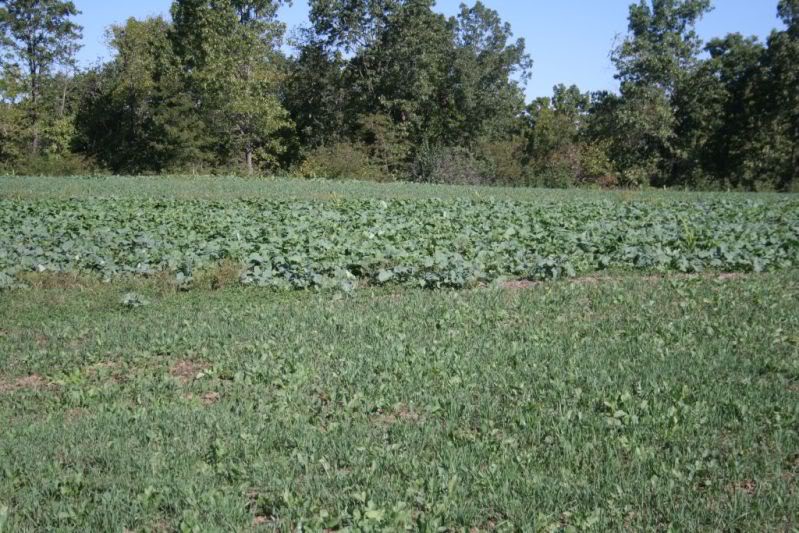
The salad bar of lush palatable options in the mixes i share is designed to feed high numbers of deer without...having them wipe it out early in the season. Each plant may be chosen for a time over another but by winters end...they will have devoured everything in sight....
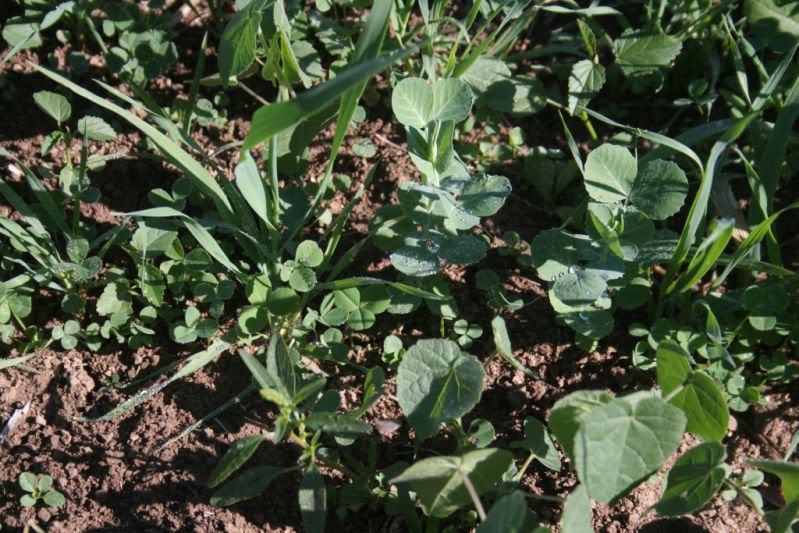
The brassicas in my habitat mix are there to keep deer fed with tons of high quality forage and roots well past the first of the year with the rye combination feeding the early and then late...all the way into spring and summer because of the clovers in the mix
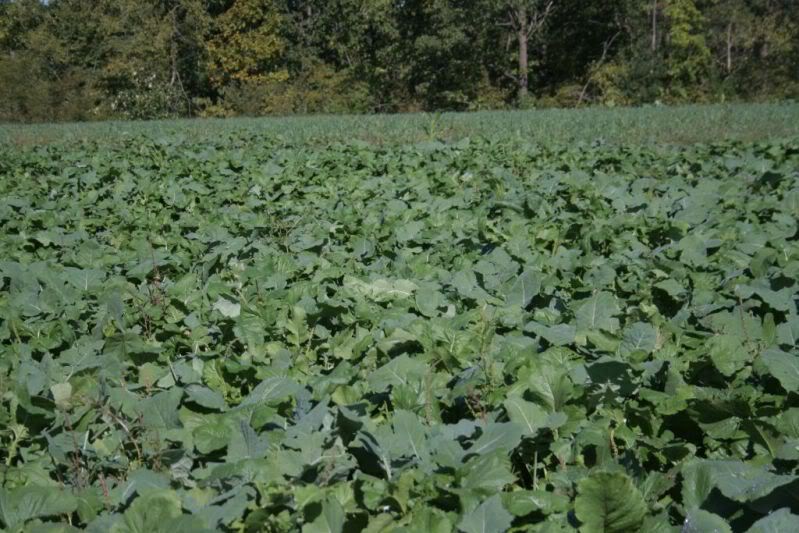
Increasingly...landowners have been able to see the reasons for planting year around food sources that not only adapt deer to coming to their feeding area, every day 365 days a year....but also that they can vastly improve their soils and lower fertilizer and herbicide needs using these great, yet simple rotations.
Mark sent in pics of his combination plots in northern Missouri...
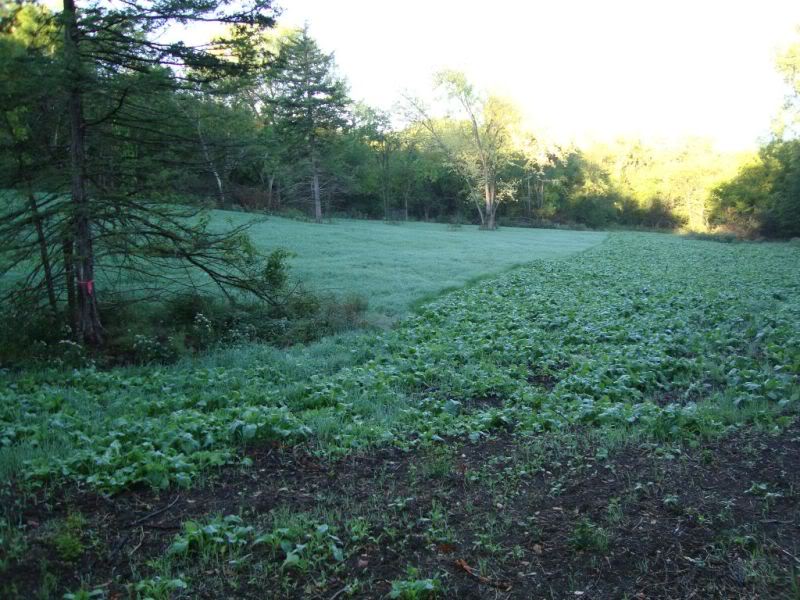
beautiful crops!
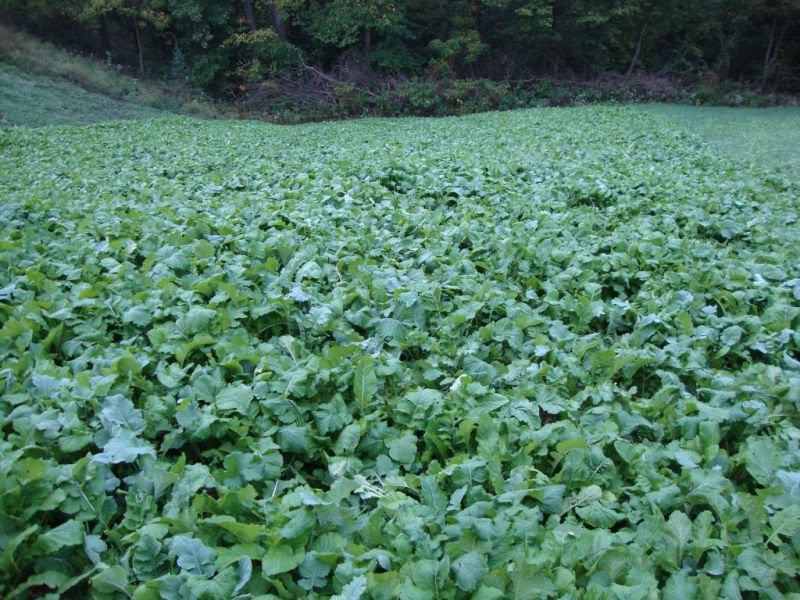
Giant leaves on very healthy brassicas!
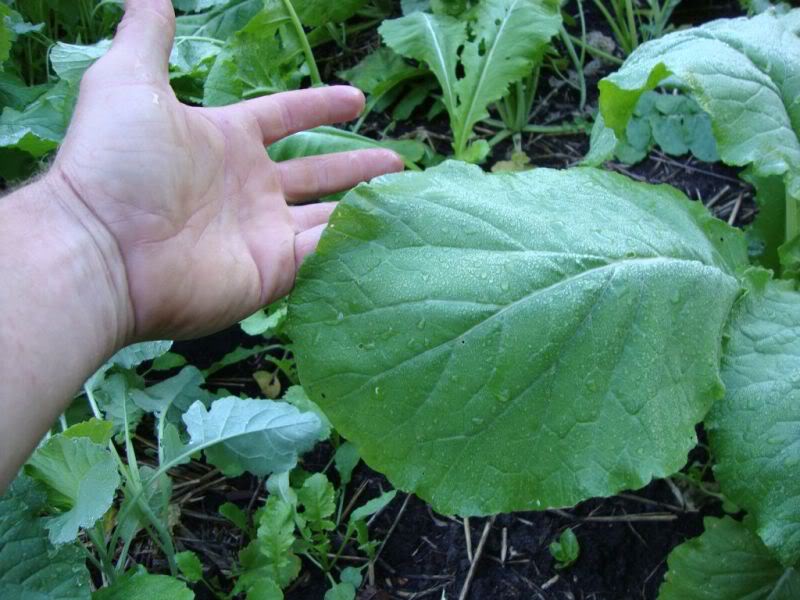
Rich sent me pics of his combo plots that look outstanding!
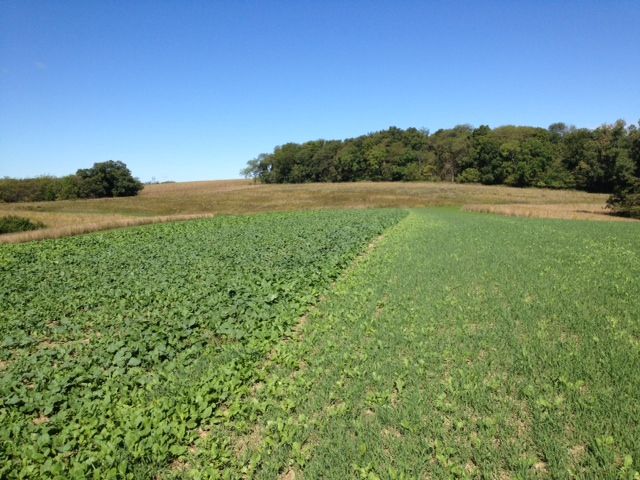
and Fred's feeding area is perfect! Surrounded by thick Cave In Rock switchgrass and heavily hinged timber bedding areas.
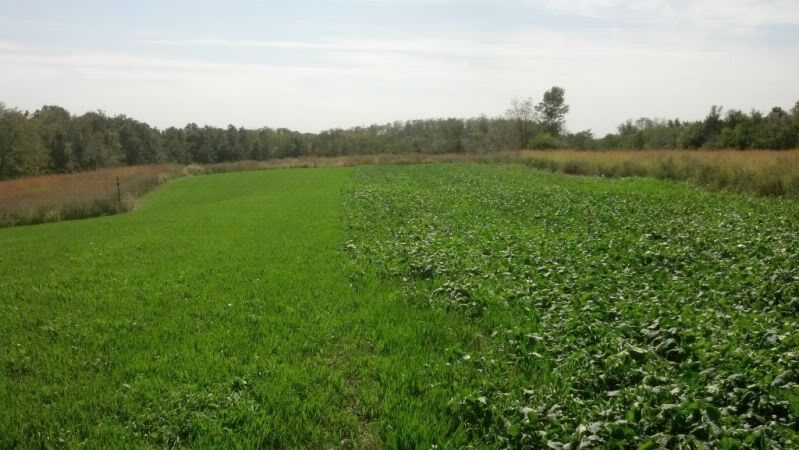
The longer they use these combination plots in safe secure, hidden feeding areas and...increase surrounded cover, the more daily activity they will see. Combined with white clover areas in and around these food sources they will feed deer year around and being creatures of habit...they will, over time have beat down runways coming to these feeding areas.
The following mixes are by design, tailored to keep deer from "killing" an entire food source by keeping them moving from one "favorite" to another and over time they will begin to ignore neighboring crops and temporary food plots planted by those lacking understanding of what it takes to create true whitetail habitat....
The turnips have really started to grow once they got a little rain!

At this farm deer are even starting to eat the turnip tops already....scary!

Mostly they concentrate on the forage radish tops....

allowing the rape and turnip plants to grow and provide winter forage

I have had brassicas wiped out many times but by having the cereal grain mix side by side, deer begin to focus on the lush rye and oats...further sparing the brassicas for now

as with other crops such as soybeans and corn...the rate at which deer forage on ANY crop type will depend on the quality of adjacent cover and has NOTHING to do with crop type. No cover = no deer and plots go untouched while fantastic thick cover will in turn mean a high number of resident whitetails that will forage on ANY crop they can take advantage of.
Knowing this...if deer appear to not be feeding on any crop type of the entire feeding area...it is not the crop...it's the cover! Deer are opportunistic feeders and they do not have the luxury of turning up their noses at this food or that, unless they are knee deep in food...such as with the plots pictured....

The salad bar of lush palatable options in the mixes i share is designed to feed high numbers of deer without...having them wipe it out early in the season. Each plant may be chosen for a time over another but by winters end...they will have devoured everything in sight....

The brassicas in my habitat mix are there to keep deer fed with tons of high quality forage and roots well past the first of the year with the rye combination feeding the early and then late...all the way into spring and summer because of the clovers in the mix

Increasingly...landowners have been able to see the reasons for planting year around food sources that not only adapt deer to coming to their feeding area, every day 365 days a year....but also that they can vastly improve their soils and lower fertilizer and herbicide needs using these great, yet simple rotations.
Mark sent in pics of his combination plots in northern Missouri...

beautiful crops!

Giant leaves on very healthy brassicas!

Rich sent me pics of his combo plots that look outstanding!

and Fred's feeding area is perfect! Surrounded by thick Cave In Rock switchgrass and heavily hinged timber bedding areas.

The longer they use these combination plots in safe secure, hidden feeding areas and...increase surrounded cover, the more daily activity they will see. Combined with white clover areas in and around these food sources they will feed deer year around and being creatures of habit...they will, over time have beat down runways coming to these feeding areas.
The following mixes are by design, tailored to keep deer from "killing" an entire food source by keeping them moving from one "favorite" to another and over time they will begin to ignore neighboring crops and temporary food plots planted by those lacking understanding of what it takes to create true whitetail habitat....
Plant ALL in one plot in strips or blocks
Alice, Kopu II, Durana (or comparable) white clover 10% of plot, sow at 6#'s per acre with the rye combination in the fall or in the spring with oats and berseem clover. Correct Ph and P&K with soil tests
Brassicas in 45% of plot
Purple Top Turnips 3#
Dwarf Essex Rape 2#
GroundHog Forage radish 5#
Plant in mid to late July in most Midwest states, or 60-90 days before your first killing frost, Use 200#'s of 46-0-0 urea and 400#'s of 6-28-28 per acre. Follow the dead brassicas with oats and berseem or crimson clover in mid spring at 60#'s oats and 12-15#'s berseem clover and/or 50#'s of chickling vetch)
Cereal Grain combo in 45% of plot
Winter rye 50-80#'s per acre (56#'s = a bushel)
Spring oats 80-120#'s per acre (32#'s = a bushel)
Frostmaster Winter Peas or 4010/6040 Forage peas 20-80#'s per acre
Red Clover 8-12#'s per acre or white clover at 6#'s per acre (or 20-40 pounds hairy vetch and 20-30#'s crimson clover on sandy soils)
Groundhog Forage Radish 5#'s per acre
Plant in late August to early September, if following well fertilized brassicas use 100 - 200#'s of urea, if starting a new plot add 400#'s of 6-28-28
Rotate the brassicas and rye combo each year
showstopper
PMA Member
Mine did the exact same thing. They were nearly knee high and now they are flat like they were hit with a big snow. I'm guessing not enough rain to keep them alive or something. Bummer for sure!
goatman
I hunt days ending in Y
Anyone ever seen brassicas go from this to this in two weeks? Left 9/12, right 9/25
Checked mine tonight. They are dying from lack of rain.
jlarson007
Member
Get yourself a pump and tank justin. Get all the rain you need!
dbltree
Super Moderator
September 29th, 2012
Desperately dry conditions have returned after receiving several inches of rain in late August and early September but brassicas planted in mid summer now have roots deep enough to survive, especially where they followed winter rye...such as you see here...
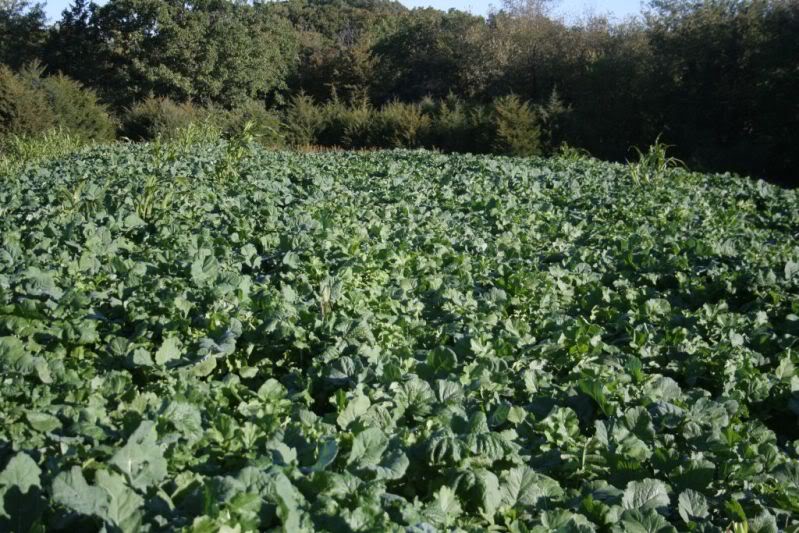
Not everyone in drought stricken areas has brassicas like this....
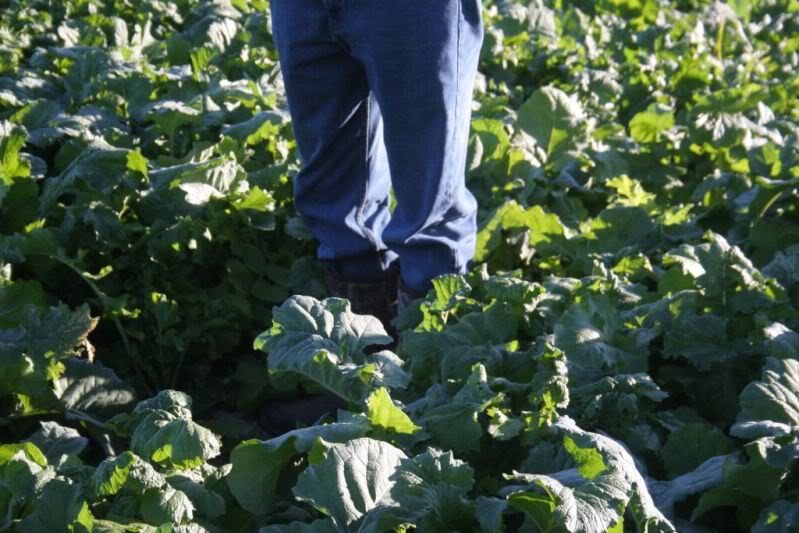
You will see...from time to time and unknowing poster who says "why not just plant wheat (or any other crop) cause I saw deer eating it" but unfortunately for them (and others confused by their posts) they do not understand the profound affects of planting winter/cereal rye on both their land/soils and for whitetails.
385 miles of water retaining, nitrogen scavenging root systems below ground and the above ground plant averages higher in protein then other cereals, grows down to 34 degrees, is the most winter hardy cereal and those attributes are just the tip of the iceberg.
I visited a farm recently where a friend of mine is also using the crop combinations seen below and he too has noticed the amazing difference between brassicas that followed winter rye (on the right) and those that followed oats (on the left)
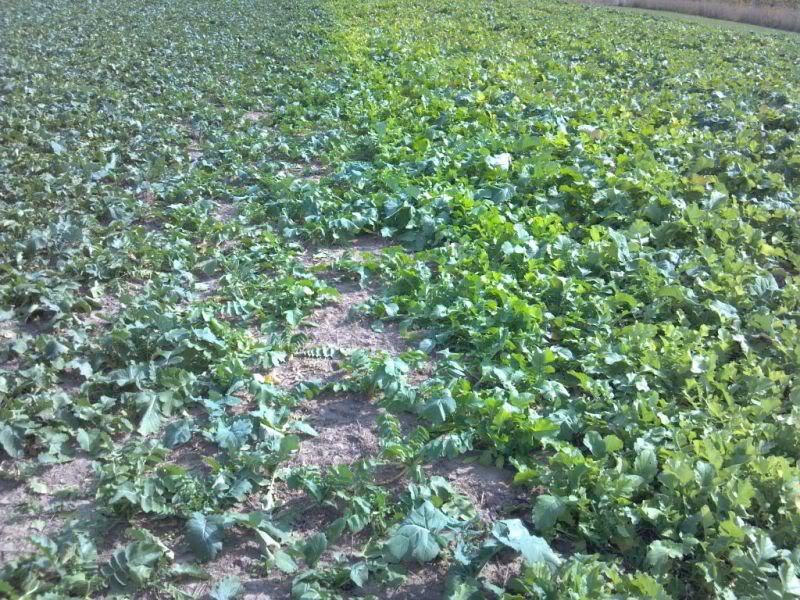
Brassicas that were planted into tilled under rye straw this summer are easily 6-10" higher, thicker and loaded with lush growth

In the same field, next to the brassicas are the rye combo and a strip of ladino clover around the outside, insuring that whitetails will always have feed there.
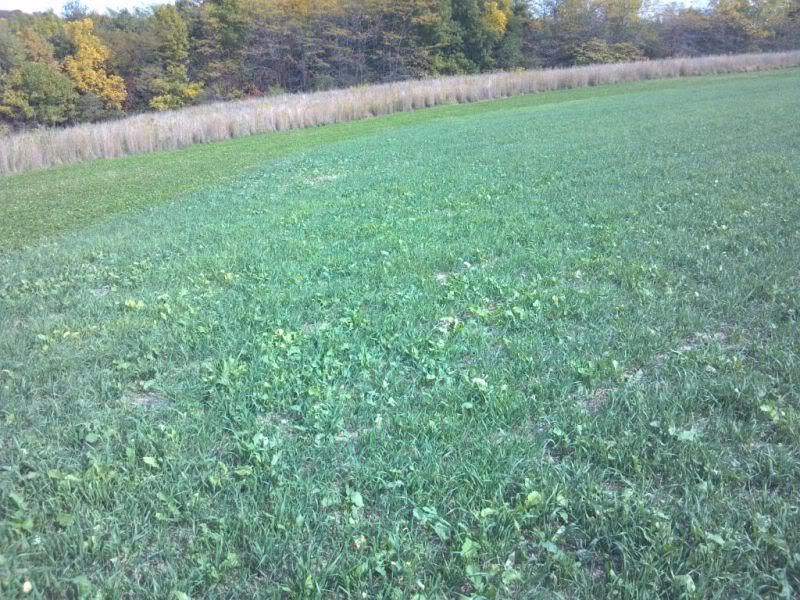
This feeding area is right beside a large field of corn yet deer are grazing both the rye and the brassicas with the forage radish being the favored forage right now
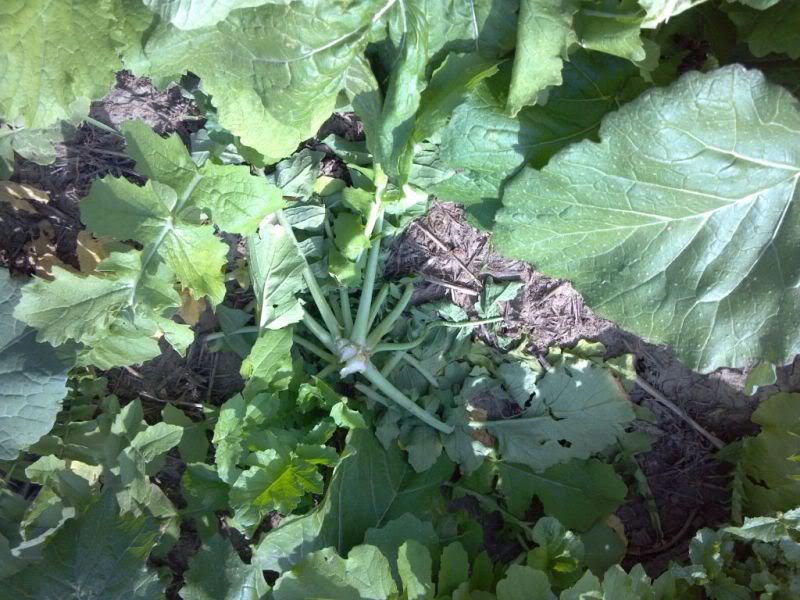
In the area where brassicas did NOT follow rye, the smaller (late germinating) brassicas are succumbing to the continuing drought
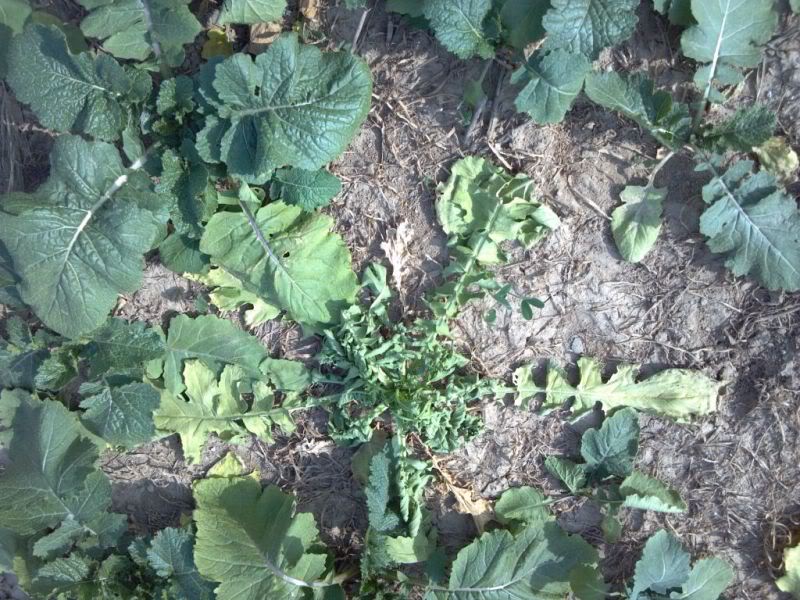
The rye areas of course followed the spring planted oat/annual clover crop and while the rye and oats can tolerate considerable drought...the young forage radish are being stressed to the max
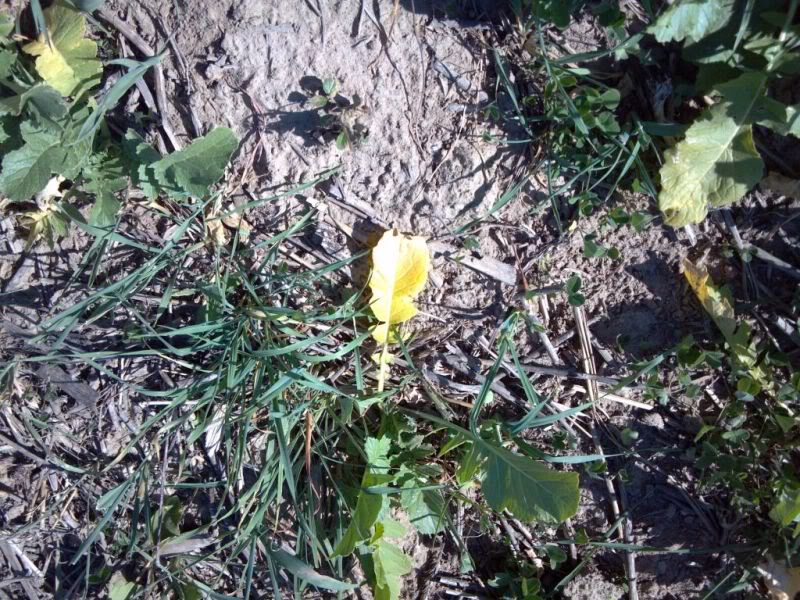
these brassicas (per the landowners wishes) were planted August 15th....a full 30 days of growing time lost and they are suffering as well.
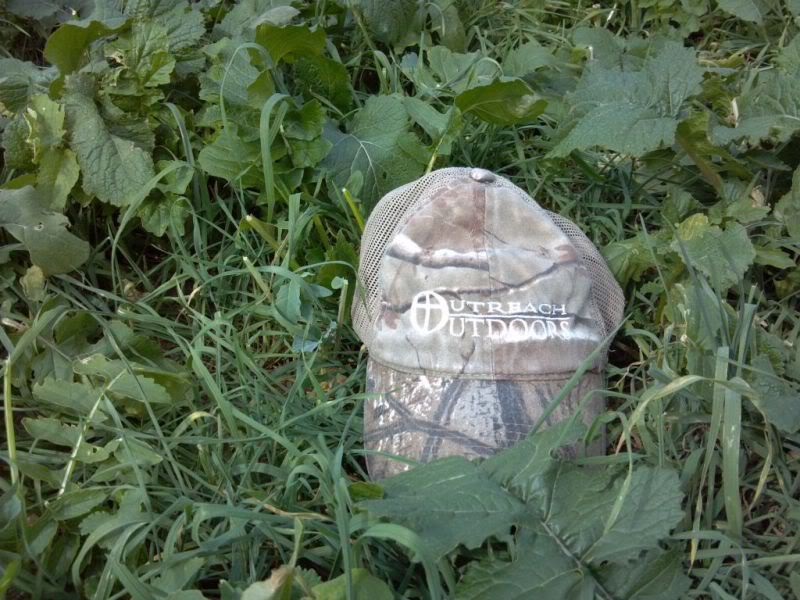
So far, in every field/farm I have visited...whitetails are hammering the forage radish and show no preference to variety planted (Tiller, Trophy, Tillage of GroundHog)
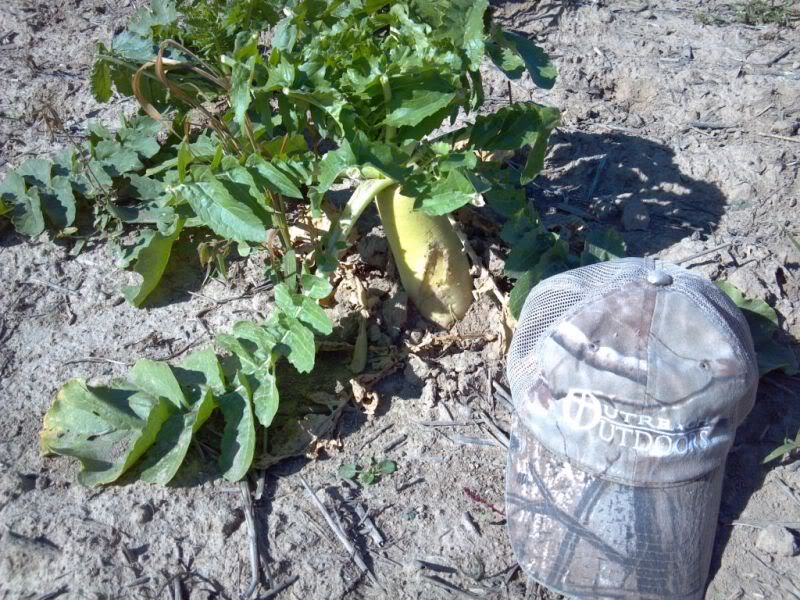
The roots are getting some size to them now, despite being heavily grazed and the extreme dry weather
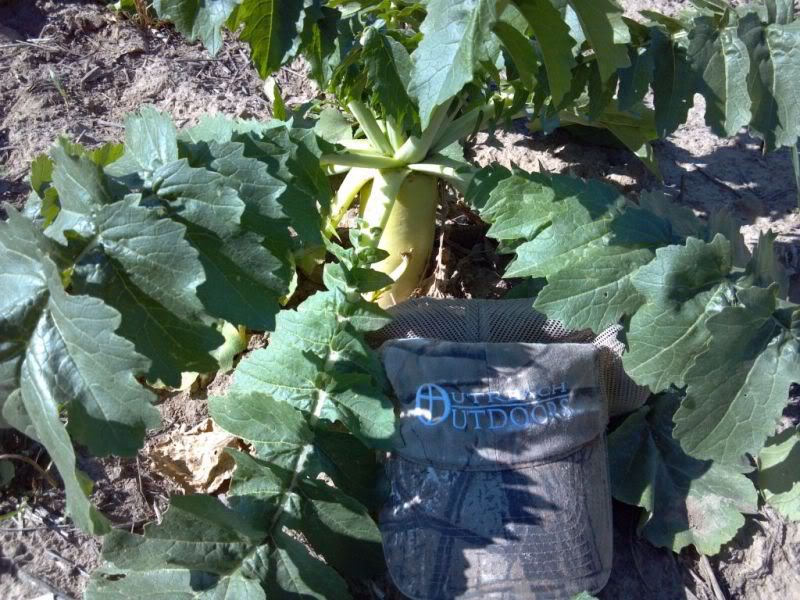
In each brassica planting it is easy to see where deer have walked thru and selectively grazed the forage radish
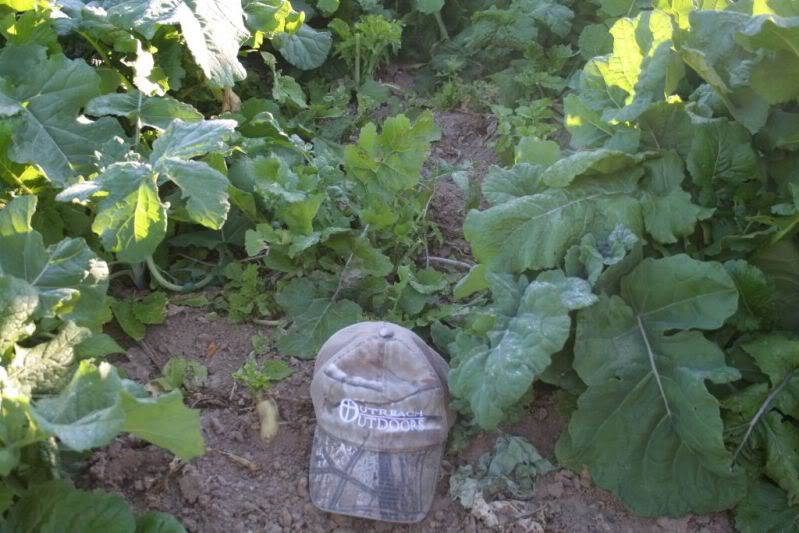
This thins the brassicas and helps protect the rape and turnips that will be needed for late winter food sources
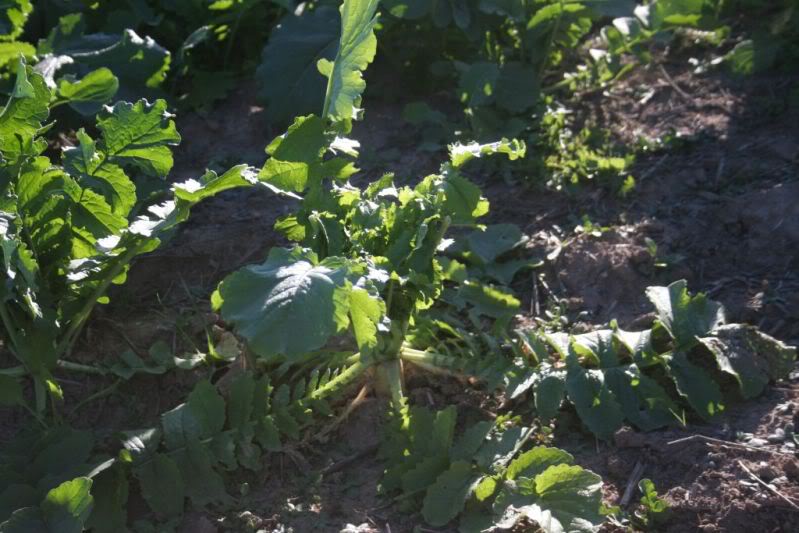
Both radish and turnips help improve our soils as they send down long tap roots to scavenge sub soil nutrients
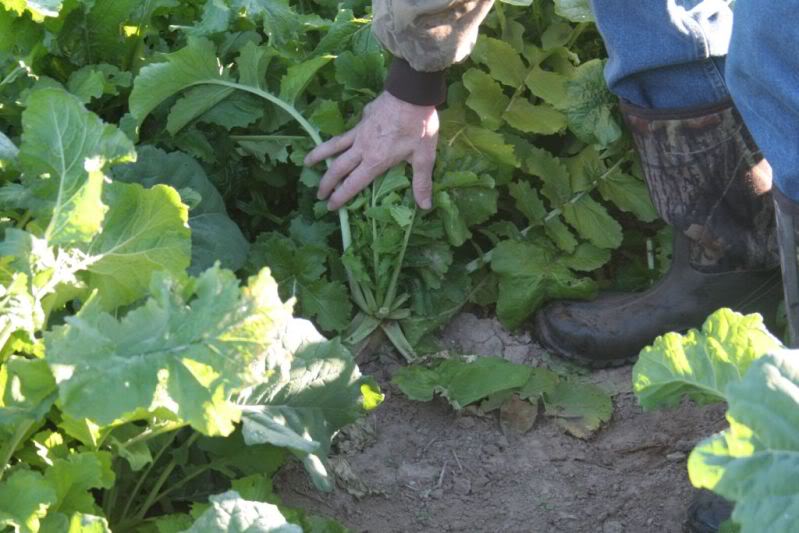
Brassicas are an important element in our feeding areas but as many are finding out, they may not survive extreme droughts and then, because they did not include rye and clover in their feeding area...they may now be left disappointed and frustrated.
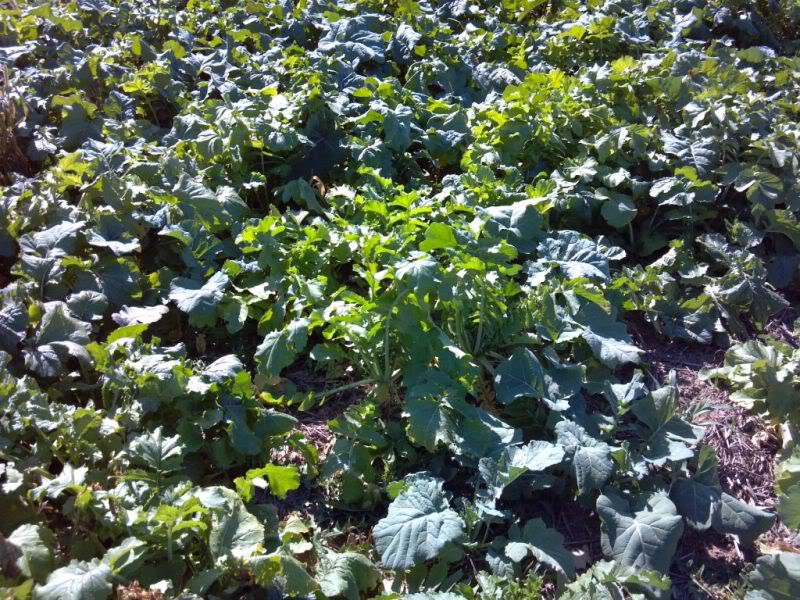
My mission is to serve Christ by helping people, to encourage and share what I have learned in a lifetime of habitat work and I have not now nor ever will stop...learning and sharing that information. Hopefully you will see how important it is to use the right crop rotations, all planted in each feeding area and then rotated annually. No one plant is less important then the other, each is very attractive to whitetails and each plays a part in building your soils and providing insurance against crop failures.
Anyone can plant "stuff" and deer will eat almost any "stuff" you offer them but there is something better, far better and over most of the nation the following crop combinations planted in each feeding area will attract and hold whitetails year around and build beautiful high organic matter soils at the same time. In time...you too can share pictures of beautiful lush crops even in drought years that left your neighbors staring at a...dirt plot....
Desperately dry conditions have returned after receiving several inches of rain in late August and early September but brassicas planted in mid summer now have roots deep enough to survive, especially where they followed winter rye...such as you see here...

Not everyone in drought stricken areas has brassicas like this....

You will see...from time to time and unknowing poster who says "why not just plant wheat (or any other crop) cause I saw deer eating it" but unfortunately for them (and others confused by their posts) they do not understand the profound affects of planting winter/cereal rye on both their land/soils and for whitetails.
385 miles of water retaining, nitrogen scavenging root systems below ground and the above ground plant averages higher in protein then other cereals, grows down to 34 degrees, is the most winter hardy cereal and those attributes are just the tip of the iceberg.
I visited a farm recently where a friend of mine is also using the crop combinations seen below and he too has noticed the amazing difference between brassicas that followed winter rye (on the right) and those that followed oats (on the left)

Brassicas that were planted into tilled under rye straw this summer are easily 6-10" higher, thicker and loaded with lush growth

In the same field, next to the brassicas are the rye combo and a strip of ladino clover around the outside, insuring that whitetails will always have feed there.

This feeding area is right beside a large field of corn yet deer are grazing both the rye and the brassicas with the forage radish being the favored forage right now

In the area where brassicas did NOT follow rye, the smaller (late germinating) brassicas are succumbing to the continuing drought

The rye areas of course followed the spring planted oat/annual clover crop and while the rye and oats can tolerate considerable drought...the young forage radish are being stressed to the max

these brassicas (per the landowners wishes) were planted August 15th....a full 30 days of growing time lost and they are suffering as well.

So far, in every field/farm I have visited...whitetails are hammering the forage radish and show no preference to variety planted (Tiller, Trophy, Tillage of GroundHog)

The roots are getting some size to them now, despite being heavily grazed and the extreme dry weather

In each brassica planting it is easy to see where deer have walked thru and selectively grazed the forage radish

This thins the brassicas and helps protect the rape and turnips that will be needed for late winter food sources

Both radish and turnips help improve our soils as they send down long tap roots to scavenge sub soil nutrients

Brassicas are an important element in our feeding areas but as many are finding out, they may not survive extreme droughts and then, because they did not include rye and clover in their feeding area...they may now be left disappointed and frustrated.

My mission is to serve Christ by helping people, to encourage and share what I have learned in a lifetime of habitat work and I have not now nor ever will stop...learning and sharing that information. Hopefully you will see how important it is to use the right crop rotations, all planted in each feeding area and then rotated annually. No one plant is less important then the other, each is very attractive to whitetails and each plays a part in building your soils and providing insurance against crop failures.
Anyone can plant "stuff" and deer will eat almost any "stuff" you offer them but there is something better, far better and over most of the nation the following crop combinations planted in each feeding area will attract and hold whitetails year around and build beautiful high organic matter soils at the same time. In time...you too can share pictures of beautiful lush crops even in drought years that left your neighbors staring at a...dirt plot....
Plant ALL in one plot in strips or blocks
Alice, Kopu II, Durana (or comparable) white clover 10% of plot, sow at 6#'s per acre with the rye combination in the fall or in the spring with oats and berseem clover. Correct Ph and P&K with soil tests
Brassicas in 45% of plot
Purple Top Turnips 3#
Dwarf Essex Rape 2#
GroundHog Forage radish 5#
Plant in mid to late July in most Midwest states, or 60-90 days before your first killing frost, Use 200#'s of 46-0-0 urea and 400#'s of 6-28-28 per acre. Follow the dead brassicas with oats and berseem or crimson clover in mid spring at 60#'s oats and 12-15#'s berseem clover and/or 50#'s of chickling vetch)
Cereal Grain combo in 45% of plot
Winter rye 50-80#'s per acre (56#'s = a bushel)
Spring oats 80-120#'s per acre (32#'s = a bushel)
Frostmaster Winter Peas or 4010/6040 Forage peas 20-80#'s per acre
Red Clover 8-12#'s per acre or white clover at 6#'s per acre (or 20-40 pounds hairy vetch and 20-30#'s crimson clover on sandy soils)
Groundhog Forage Radish 5#'s per acre
Plant in late August to early September, if following well fertilized brassicas use 100 - 200#'s of urea, if starting a new plot add 400#'s of 6-28-28
Rotate the brassicas and rye combo each year
dbltree
Super Moderator
October 11th, 2012
Where landowners have poor quality cover and few deer because of it, then growing high yielding crops may not be of utmost importance. Cover is Job 1 for most of us where our goal is to attract and hold mature whitetails and maintain larger numbers of deer on our property and once accomplished we must in turn feed the higher numbers of deer and that can quickly challenge us to change our thinking from just "throwing out some seed" to utilizing better farming practices to insure we get maximum yields of high quality, high yielding crops. Maintaining proper soil nutrient levels though annual soil testing, application of fertilizers and lime, adding livestock manure and green manure through the proper rotation of crops that feed deer and build our soils are all extremely important.
Doing all of those things every year, year after year insures we will grow lush, healthy crops such as these, even during drought years such as 2012...rye/oats/peas/radish/clover in the left strip and turnips, rape and forage radish in the right strip
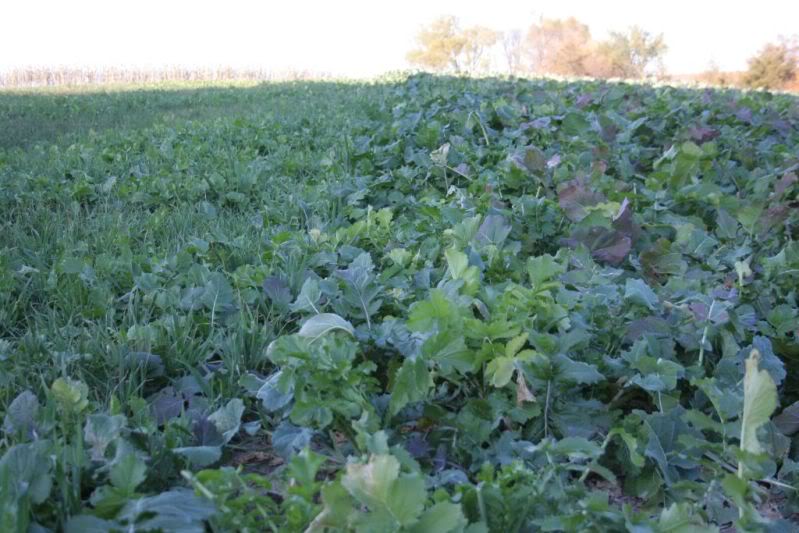
Planting brassicas at the proper time (mid July in my area) allows us to grow beautiful turnips
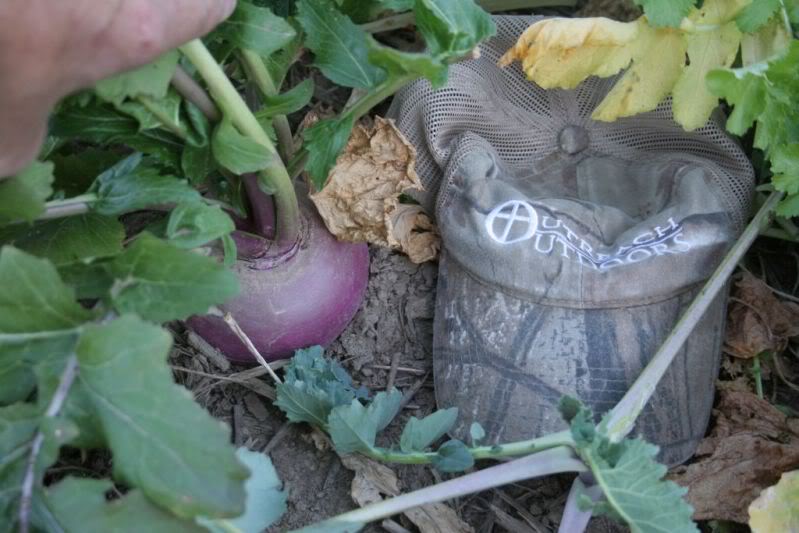
and radishes...both excellent soil builders/cover crops
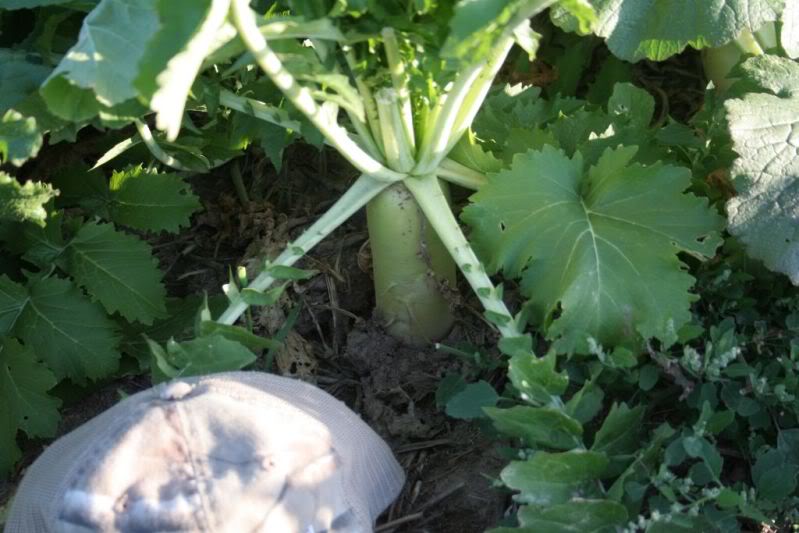
Because my main emphasis is on building outstanding cover on the farms I manage, the higher deer numbers create a significant challenge to keep them fed....already ripping the Purple Top turnips out of the ground by early October!
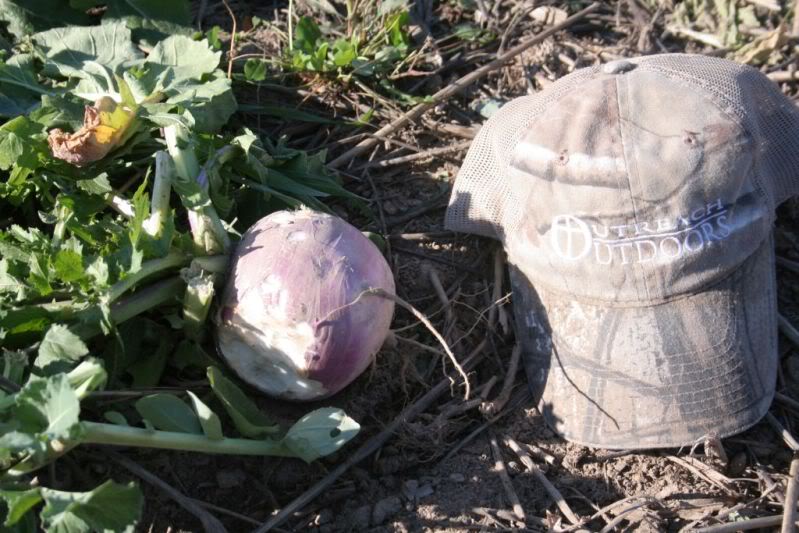
They are trashing brassica plots early on
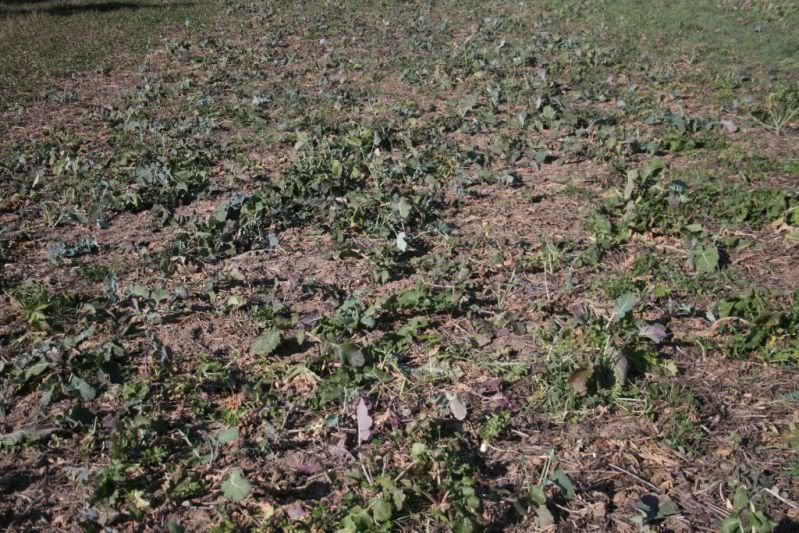
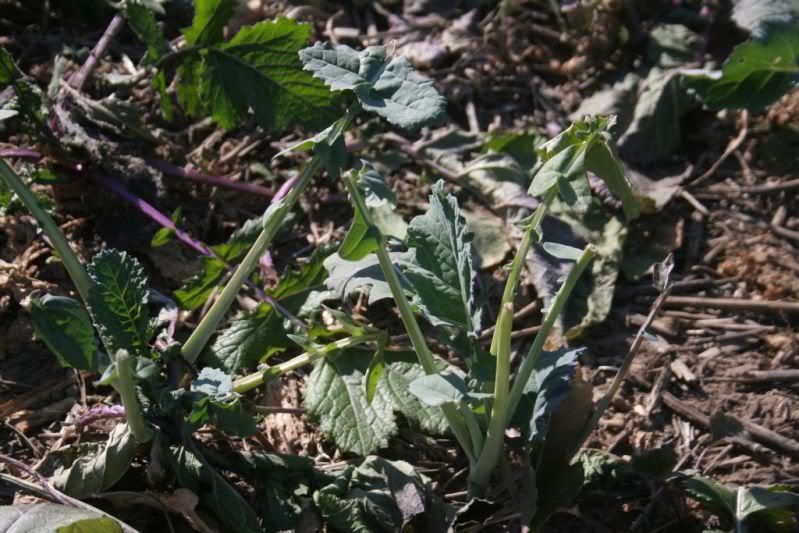
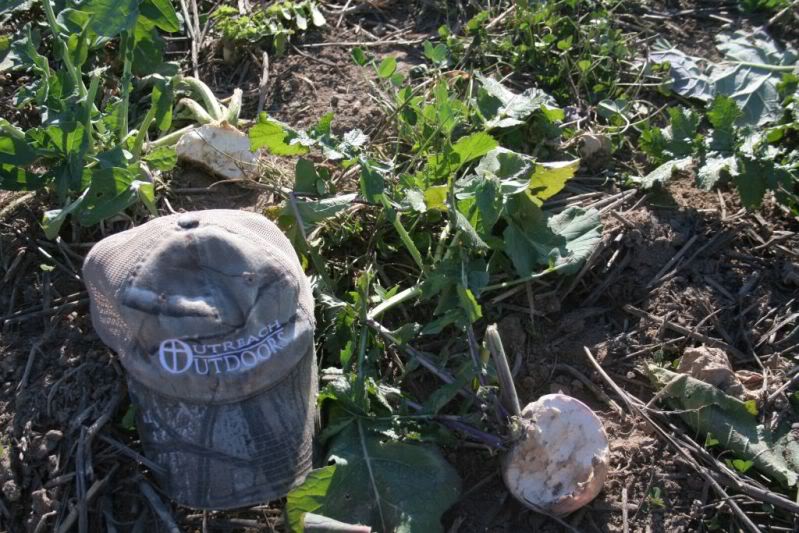
Clearly they are not pulling up the turnips by "accident"
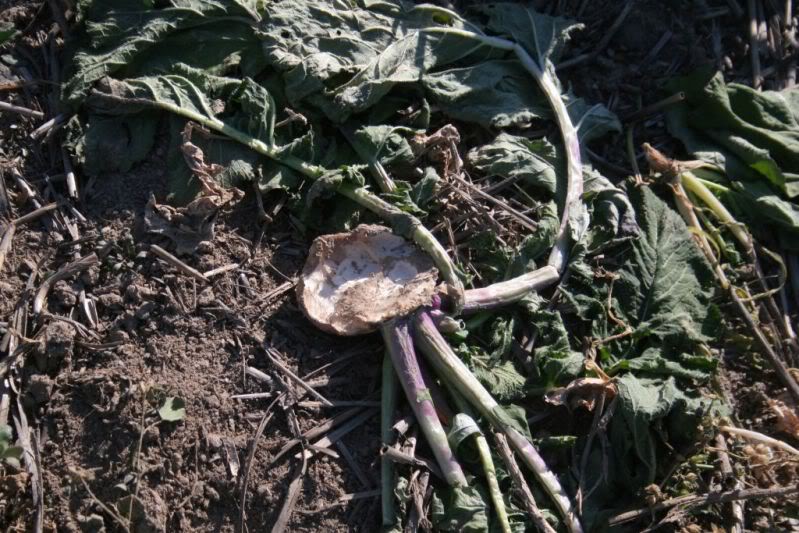
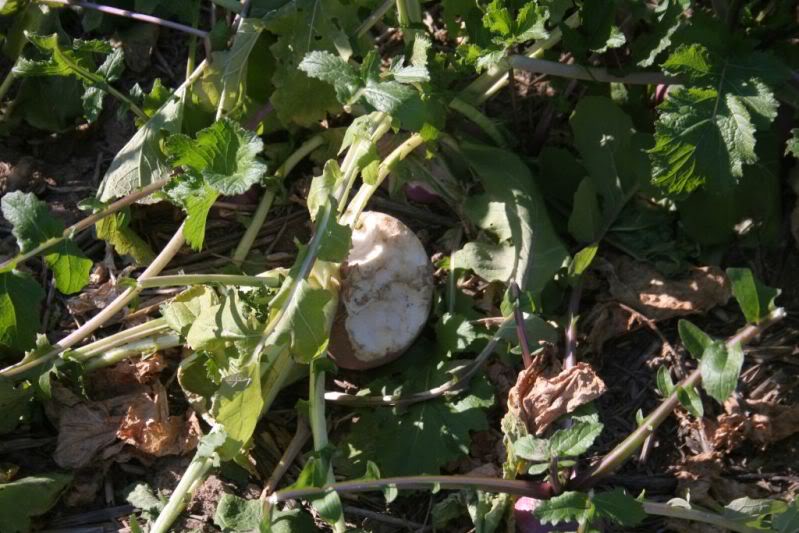
The turnip roots are intended for a late winter food source but...deer don't always follow the "rules"...
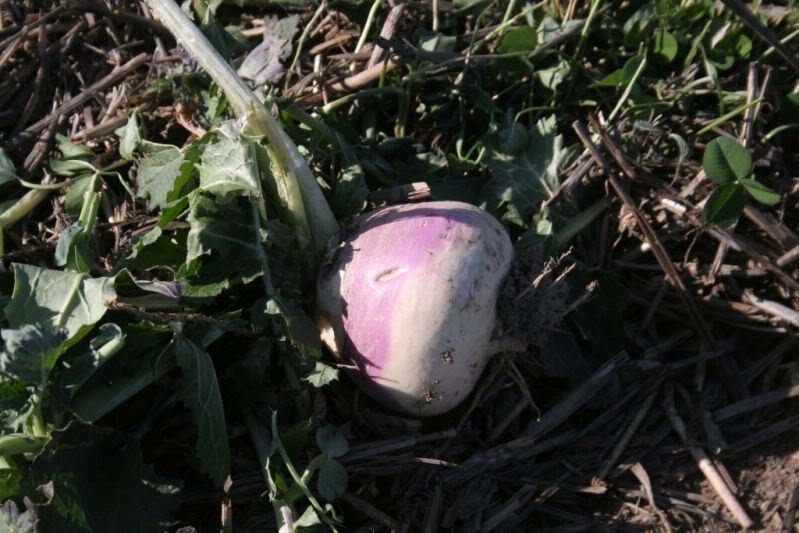
They are hammering the forage radish tops
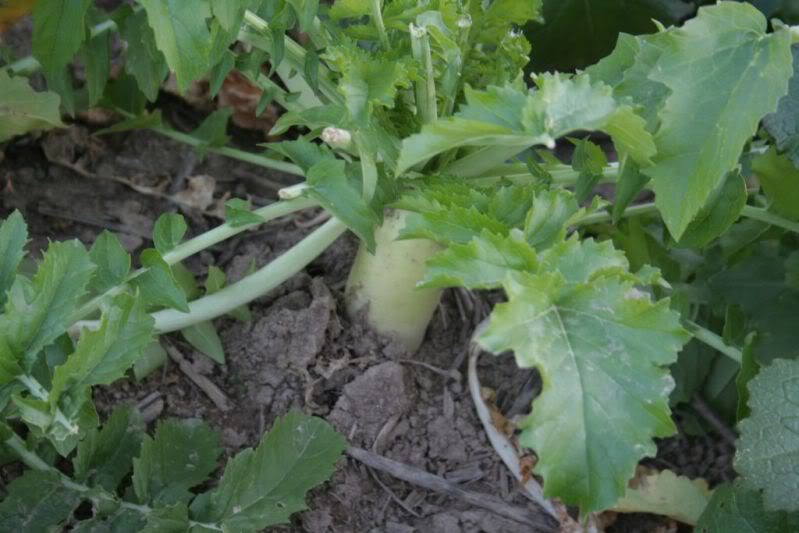
and soon figure out the roots are mighty tasty too...
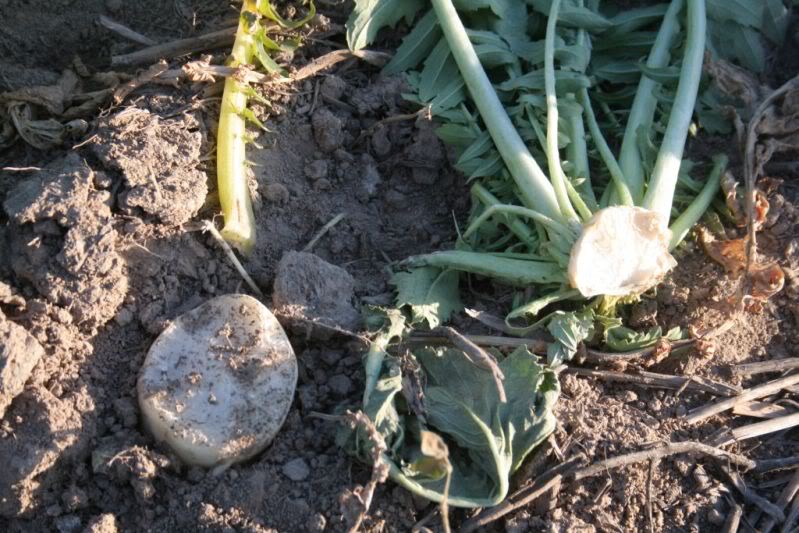
Fortunately the the rye/oat/pea/radish/clover portions of the feeding area will keep them fed after the brassicas are gone
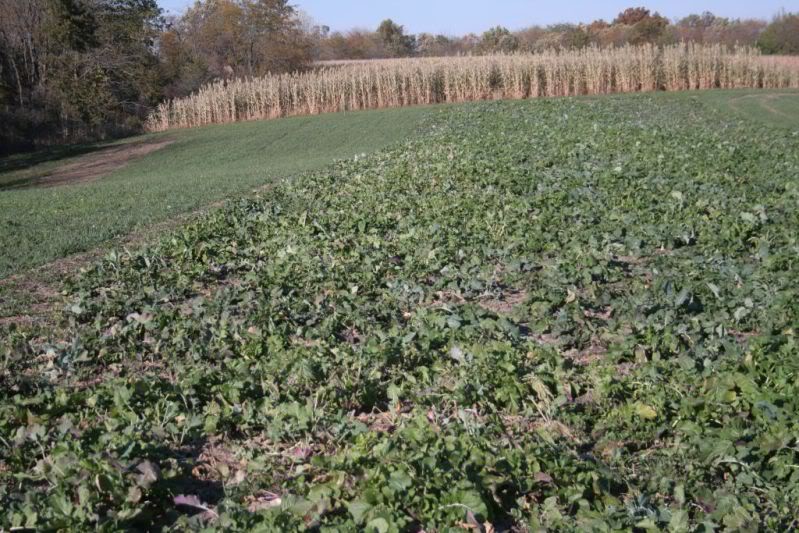
High quality cover surrounding the feeding areas means whitetails will not leave their comfort zone and will feed on almost anything planted there for them and that is true in every feeding area on dozens of farms I work with....no waiting for frost to for deer to feed on brassicas here...
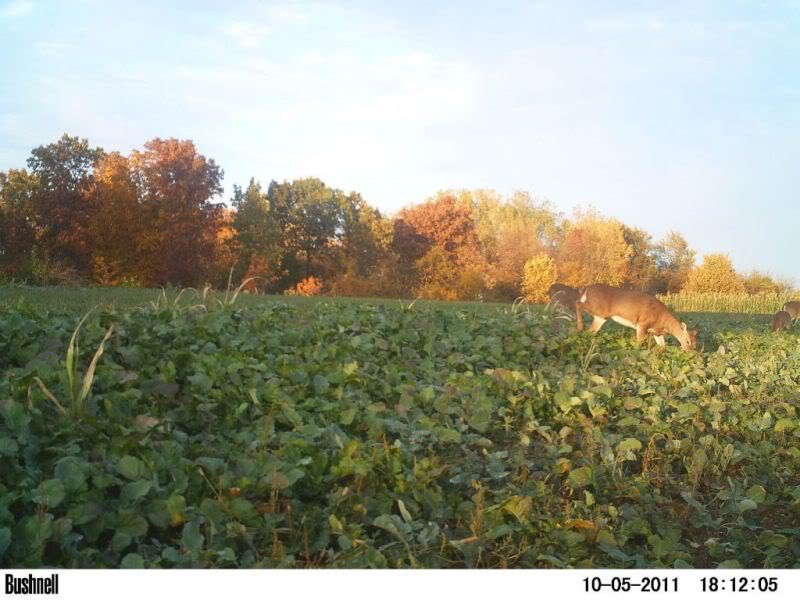
They start out feeding on the forage radish
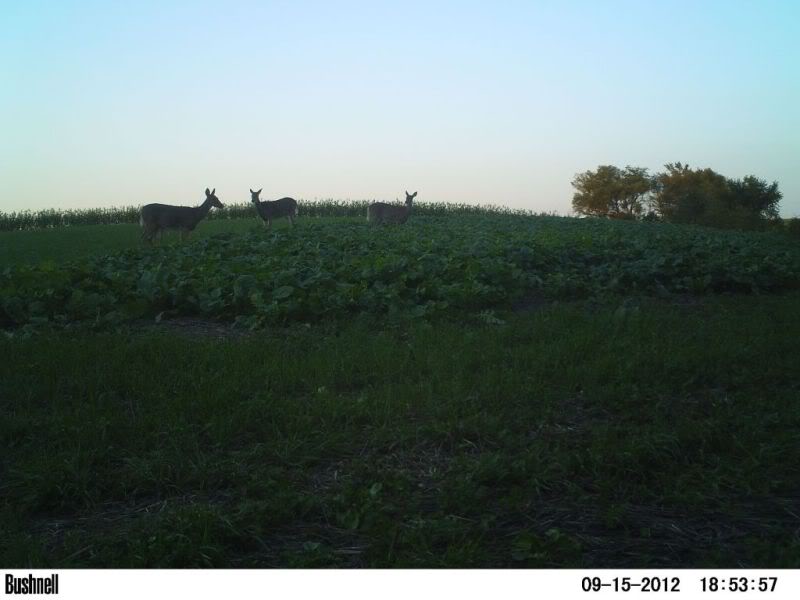
but soon are hammering everything planted for them
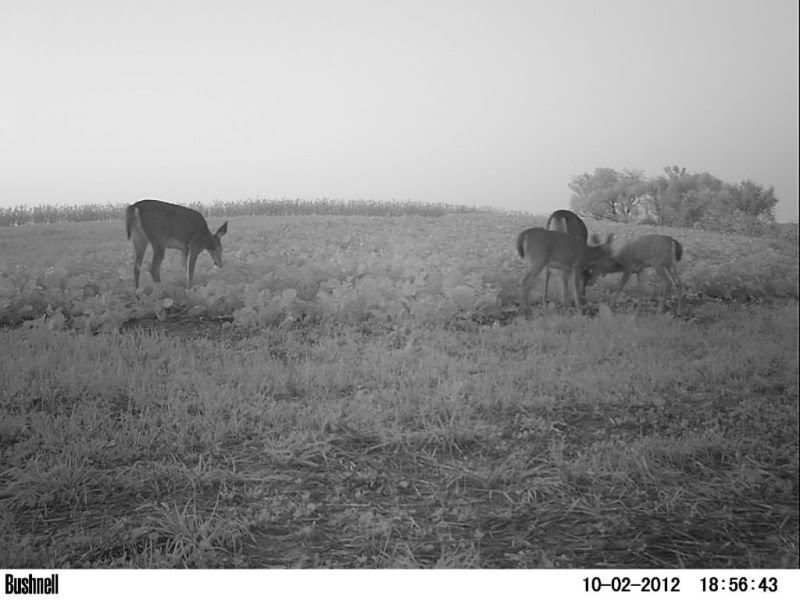
Remember to first make improving your cover a first priority and then establish feeding areas adjacent to the cover in a hidden, safe area and begin to build soils by building and maintaining soil nutrients, PH and organic matter by using the right crop combinations and proper rotations.
Attracting more whitetails comes with challenges...but nothing that can not be overcome by using the right combination of clovers, brassicas and the rye combination mix...
Where landowners have poor quality cover and few deer because of it, then growing high yielding crops may not be of utmost importance. Cover is Job 1 for most of us where our goal is to attract and hold mature whitetails and maintain larger numbers of deer on our property and once accomplished we must in turn feed the higher numbers of deer and that can quickly challenge us to change our thinking from just "throwing out some seed" to utilizing better farming practices to insure we get maximum yields of high quality, high yielding crops. Maintaining proper soil nutrient levels though annual soil testing, application of fertilizers and lime, adding livestock manure and green manure through the proper rotation of crops that feed deer and build our soils are all extremely important.
Doing all of those things every year, year after year insures we will grow lush, healthy crops such as these, even during drought years such as 2012...rye/oats/peas/radish/clover in the left strip and turnips, rape and forage radish in the right strip

Planting brassicas at the proper time (mid July in my area) allows us to grow beautiful turnips

and radishes...both excellent soil builders/cover crops

Because my main emphasis is on building outstanding cover on the farms I manage, the higher deer numbers create a significant challenge to keep them fed....already ripping the Purple Top turnips out of the ground by early October!

They are trashing brassica plots early on



Clearly they are not pulling up the turnips by "accident"


The turnip roots are intended for a late winter food source but...deer don't always follow the "rules"...

They are hammering the forage radish tops

and soon figure out the roots are mighty tasty too...

Fortunately the the rye/oat/pea/radish/clover portions of the feeding area will keep them fed after the brassicas are gone

High quality cover surrounding the feeding areas means whitetails will not leave their comfort zone and will feed on almost anything planted there for them and that is true in every feeding area on dozens of farms I work with....no waiting for frost to for deer to feed on brassicas here...

They start out feeding on the forage radish

but soon are hammering everything planted for them

Remember to first make improving your cover a first priority and then establish feeding areas adjacent to the cover in a hidden, safe area and begin to build soils by building and maintaining soil nutrients, PH and organic matter by using the right crop combinations and proper rotations.
Attracting more whitetails comes with challenges...but nothing that can not be overcome by using the right combination of clovers, brassicas and the rye combination mix...
Plant ALL in one plot in strips or blocks
Alice, Kopu II, Durana (or comparable) white clover 10% of plot, sow at 6#'s per acre with the rye combination in the fall or in the spring with oats and berseem clover. Correct Ph and P&K with soil tests
Brassicas in 45% of plot
Purple Top Turnips 3#
Dwarf Essex Rape 2#
GroundHog Forage radish 5#
Plant in mid to late July in most Midwest states, or 60-90 days before your first killing frost, Use 200#'s of 46-0-0 urea and 400#'s of 6-28-28 per acre. Follow the dead brassicas with oats and berseem or crimson clover in mid spring at 60#'s oats and 12-15#'s berseem clover and/or 50#'s of chickling vetch)
Cereal Grain combo in 45% of plot
Winter rye 50-80#'s per acre (56#'s = a bushel)
Spring oats 80-120#'s per acre (32#'s = a bushel)
Frostmaster Winter Peas or 4010/6040 Forage peas 20-80#'s per acre
Red Clover 8-12#'s per acre or white clover at 6#'s per acre (or 20-40 pounds hairy vetch and 20-30#'s crimson clover on sandy soils)
Groundhog Forage Radish 5#'s per acre
Plant in late August to early September, if following well fertilized brassicas use 100 - 200#'s of urea, if starting a new plot add 400#'s of 6-28-28
Rotate the brassicas and rye combo each year


